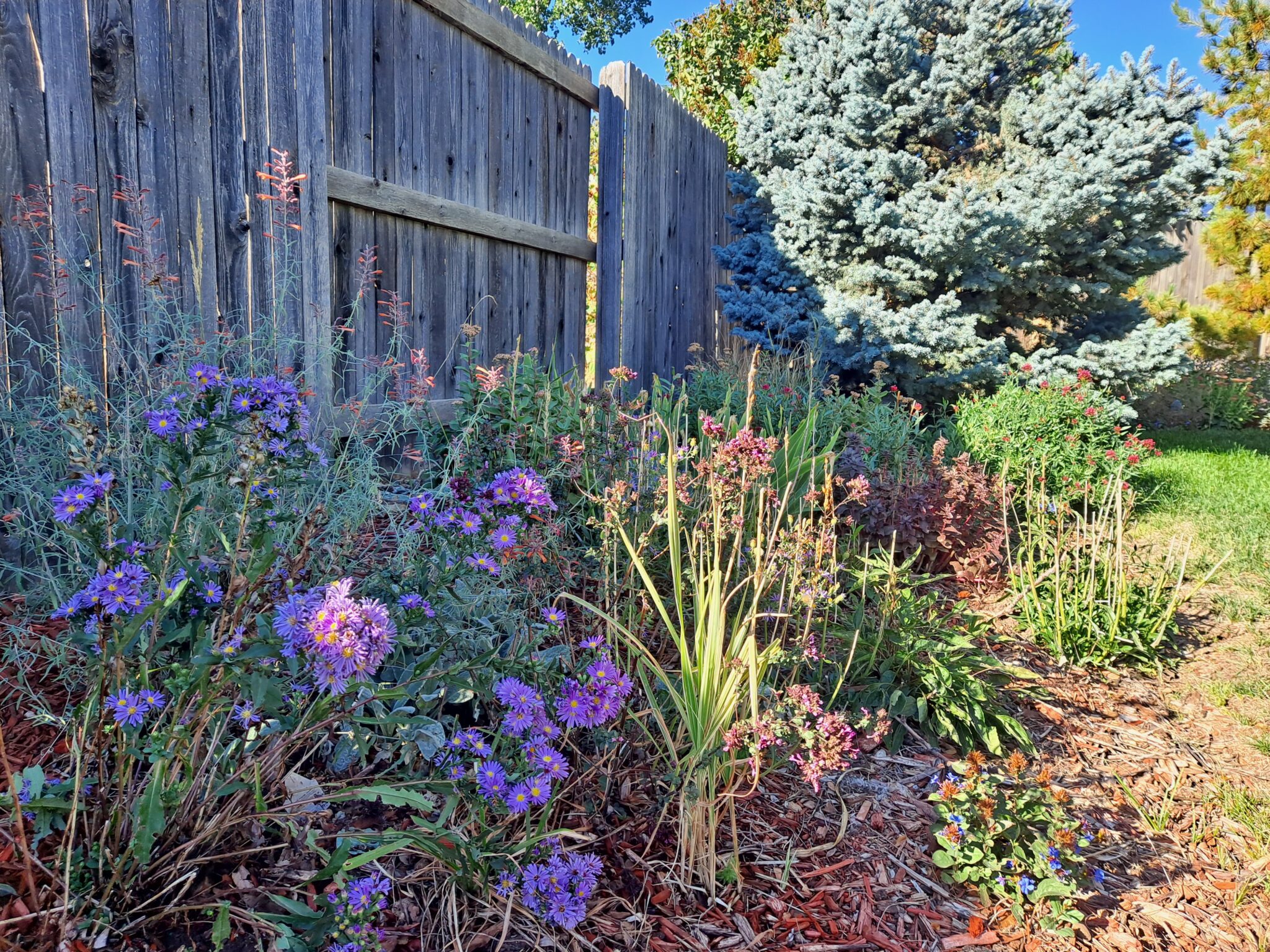
Here’s a dirty little secret about Ol’ MrVintageMan: I don’t do a whole lot of gardening in the month of August. Disgraceful, I know. I spend all winter pining for the growing season to start. I become ecstatic when the garden bursts into bloom in April and May. June is an absolute delight. Even through the heat of July I am enjoying the little slice of Eden we have created on our suburban plot.
Come the first of August though, and I bid the garden adieu for awhile. I wave to my plants and tell them “alright guys, I’m going to be inside for the next 4 to 6 weeks. You’re pretty much on your own until sometime in September. Good luck”! Then I retreat to the air-conditioned sanctuary of the house, only coming out in the evening when the temps have cooled off a bit to relax in the hammock for a bit.
Don’t get me wrong, I still do some things in the yarden. Mostly mow, weed and water. Lots and lots of watering. There is a lot less mowing then there was in May and June, mostly because at least half the lawn has gone dormant from the heat. The only sections of the grass that are green are the areas around the sprinkler heads, or the parts that are shaded by the trees or the deck.
I really hit the weeds early and hard this year, so weeding hasn’t been too much of a chore in late summer. Which is good, because one the the most aggravating things about gardening is unsuccessfully wrestling a weed out the ground while being fried by the blazing sun.
Greeting old friends
But come autumn, and the garden (and the gardener) becomes renewed. It’s a joy to go back outside, even in mid-afternoon. With the cooler temperatures the plants start to recover and thrive again. There’s no doubt that I harbor a certain wistfulness around this time of year, as I become all too aware that there are only a few more weeks of the growing season left. But that melancholy fades away as the late summer and the autumn blooms appear.
On a gardening podcast I listen to, one of the hosts stated that when autumn arrives gardeners go back out into the garden and greet their plants like they are old friends whom they haven’t seen in a while.
Great, autumn is back. So what do I plan to do about it?
Lots actually. In fact, I have so many gardening plans I may have to divide them into two blog posts. Today’s post concerns my plans for the backyard.
To start with, I am going to do something once and for all to this area of the Long Border in the backyard.
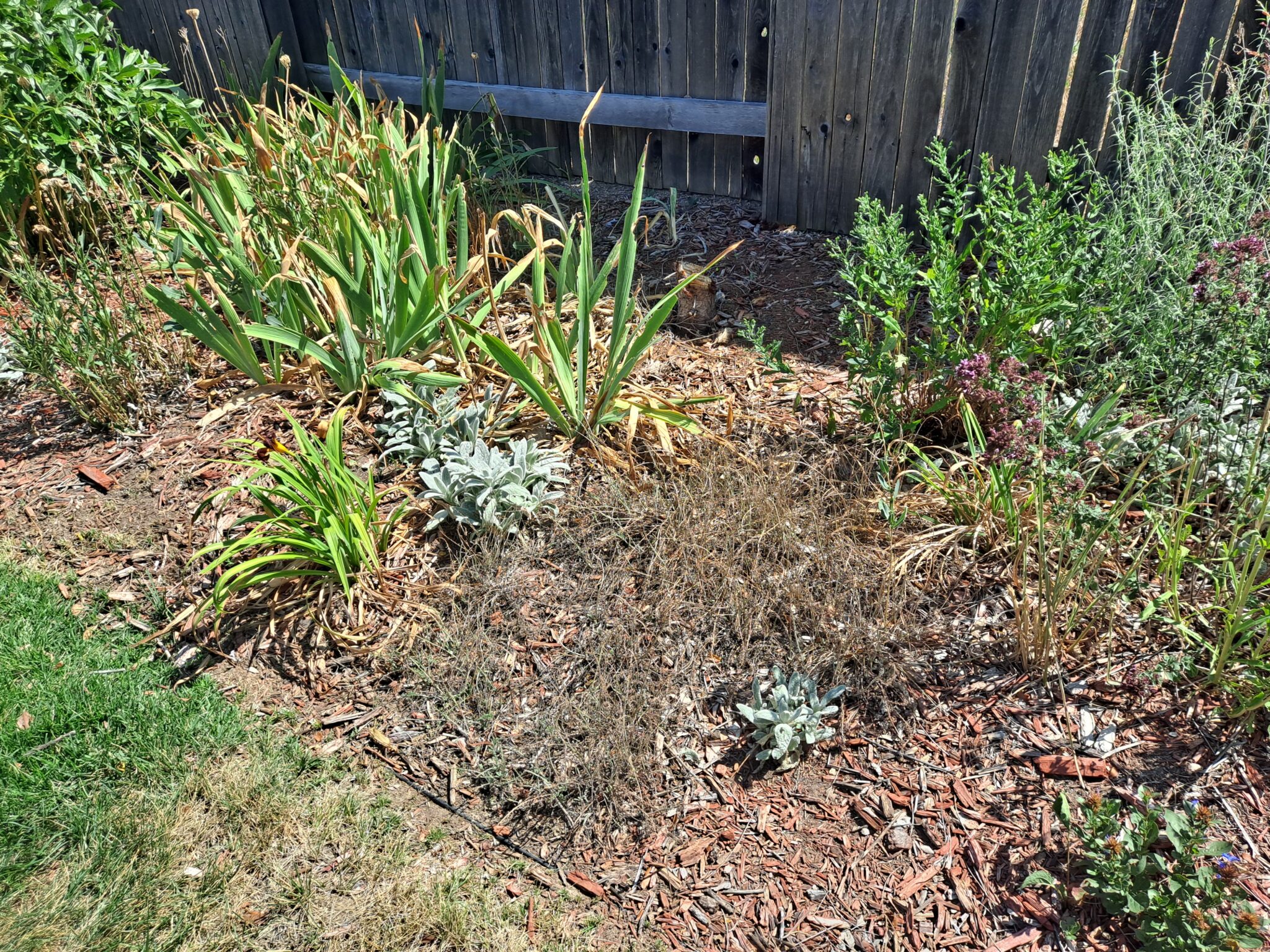
I have tried numerous times to get this area to fill in with no luck. The plants I have put in here have all been tough, waterwise plants, but as you can see the spot looks atrocious and barren. And for years I could never figure out why nothing would grow well here.
This summer I finally got my answer. You can barely see it, but in the back of the photo is the stump of the Alberta spruce I cut down earlier this year (see: https://www.mrvintageman.com/this-week-in-the-garden-odds-and-ends/). In early September, on a relatively cool day, I dug out that stump. For the most part it wasn’t too hard. Most of the roots were about the size of one of my fingers, and easily cut with a pair of loppers. There was, however, an enormous root that went from the stump to the lawn, and it just so happened to be just below the area in question. It was easily as big as my wrist, and I had to chop the sucker out with an axe.
Now with the offending root gone, I am going to fill the area in with these tough, drought tolerant plants.
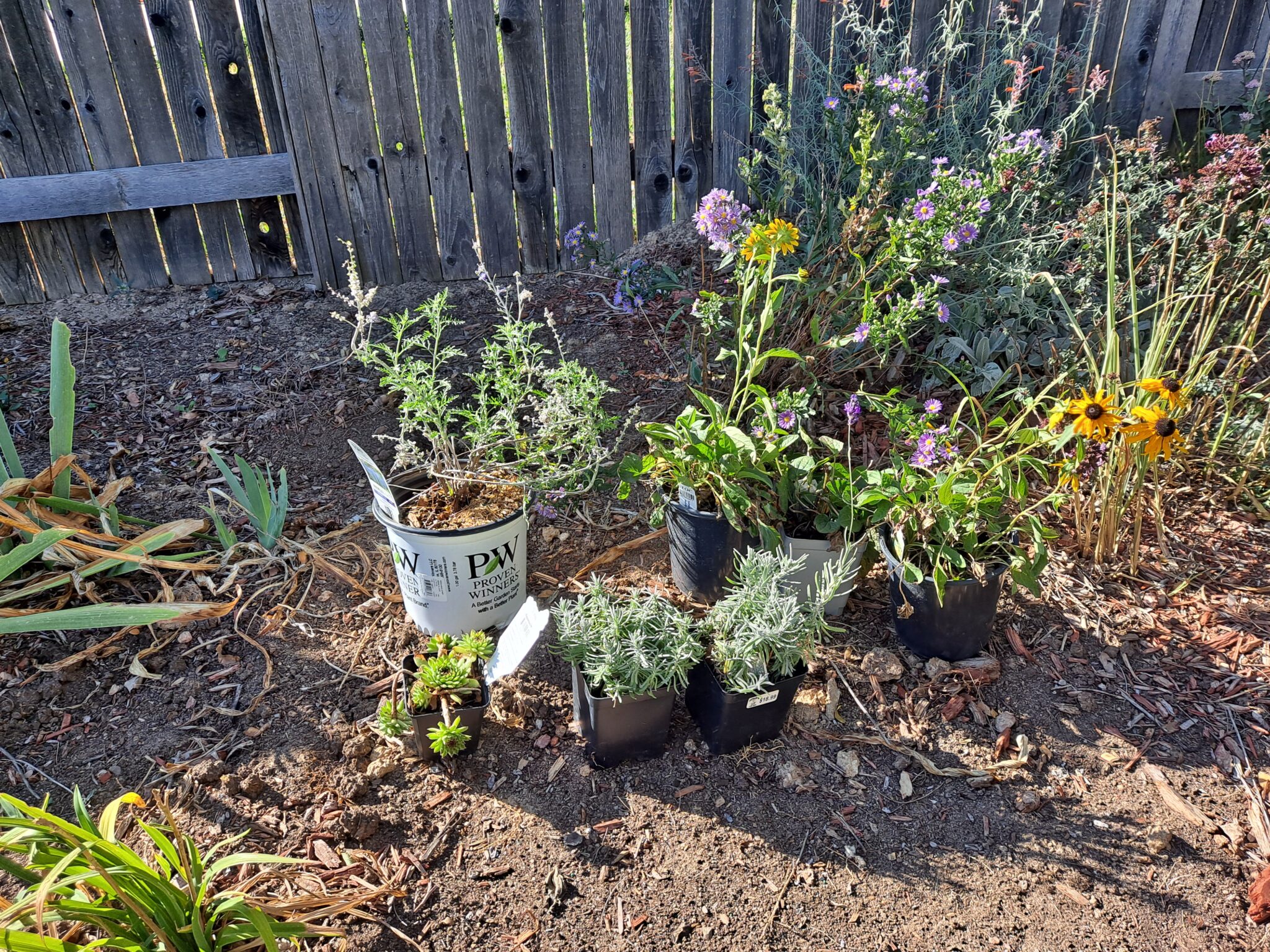
You see here the collection of plants I bought on sale in August. There’s one Russian sage (Perovskia atriplicifolia) called “Denim and Lace”, that is supposed to be more compact and not quite as lanky as the species. There’s two “Hidcote” lavenders (Lavandula angustifolia) which come from the dry, rocky areas of the Mediterranean. There are three North American native “Goldsturm” black-eyed susans (Rudbeckia). And one hens and chicks (Sempervivum) succulent. Most of these plants typically start blooming in late July and early August. My hope is that they will provide a “pop” of color in mid-summer, when most everything else has taken a siesta from the hot summer sun.
Elsewhere in the backyard
Late last year I planted a native chokeberry shrub in the birdbath border (see: https://www.mrvintageman.com/late-season-goings-on-in-the-vintage-garden/). The variety was named ‘Lowscape Hedger’, and I had high hopes for it. You will note that I used the past tense “had”, because the damn thing bit the dust this year. Even worse, I have no idea why. Did I water it too much? Not enough? Maybe it caught a disease? I will never know the answer.
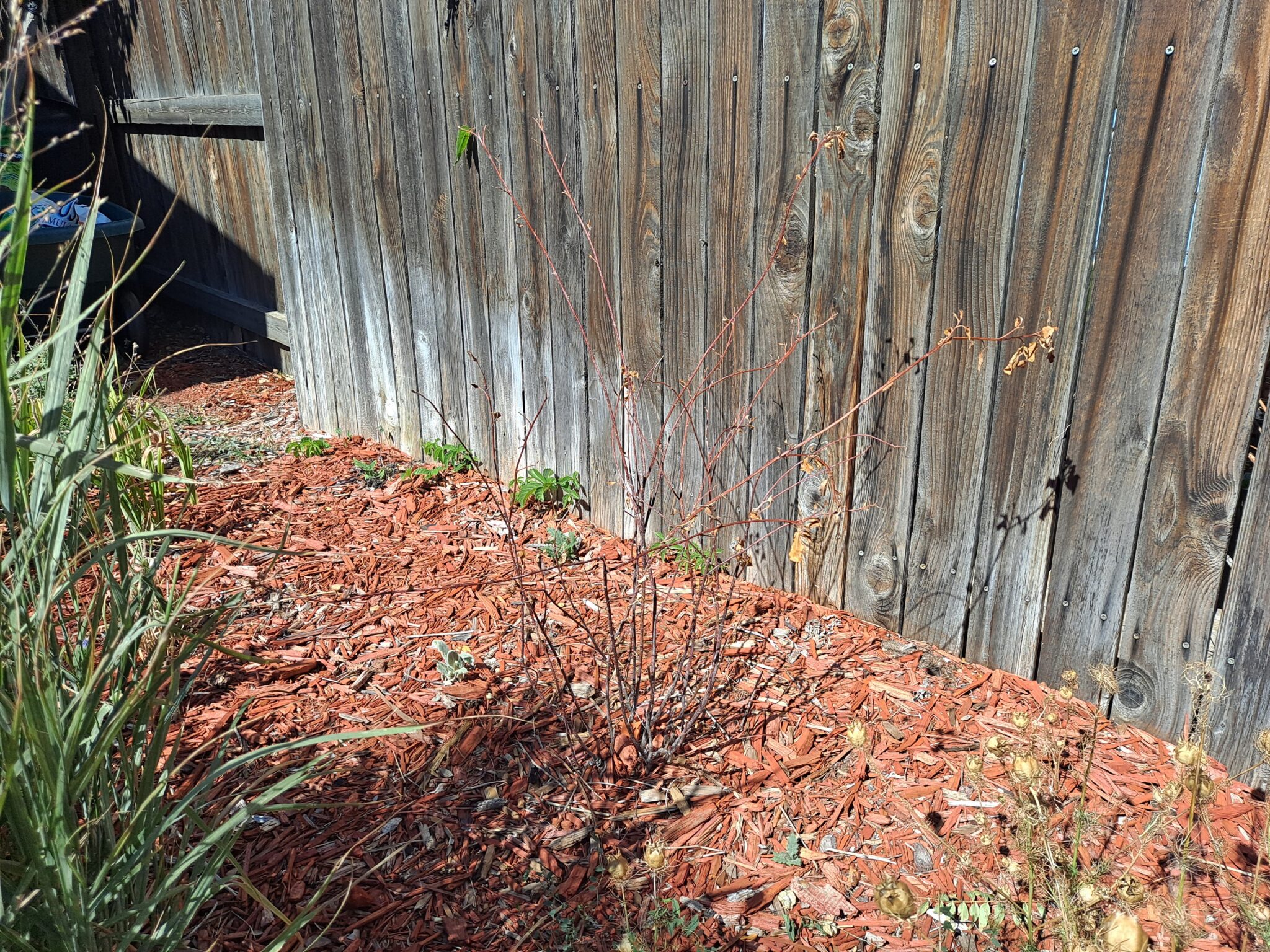
I have had problems trying to grow shrubs in this area. I lost another native plant, a Serviceberry (amelanchier) a few year ago. I know the soil is fine, because bindweed and thistle thrive just fine in this spot.
While both serviceberry and chokeberry are North American natives, they call the eastern half of the continent their home. The part of the continent that gets a lot more rain and snow than the western half.
Taking that into account, I’ve decided to give a western native a try. Perhaps it will find the area I’m going to plant it in a more hospitable than its eastern cousins did. And not just any western native, but a Colorado native. Say hello to ‘Grey Rock’ Ninebark (Physocarpus monogynus), also known as Rocky Mountain Ninebark.
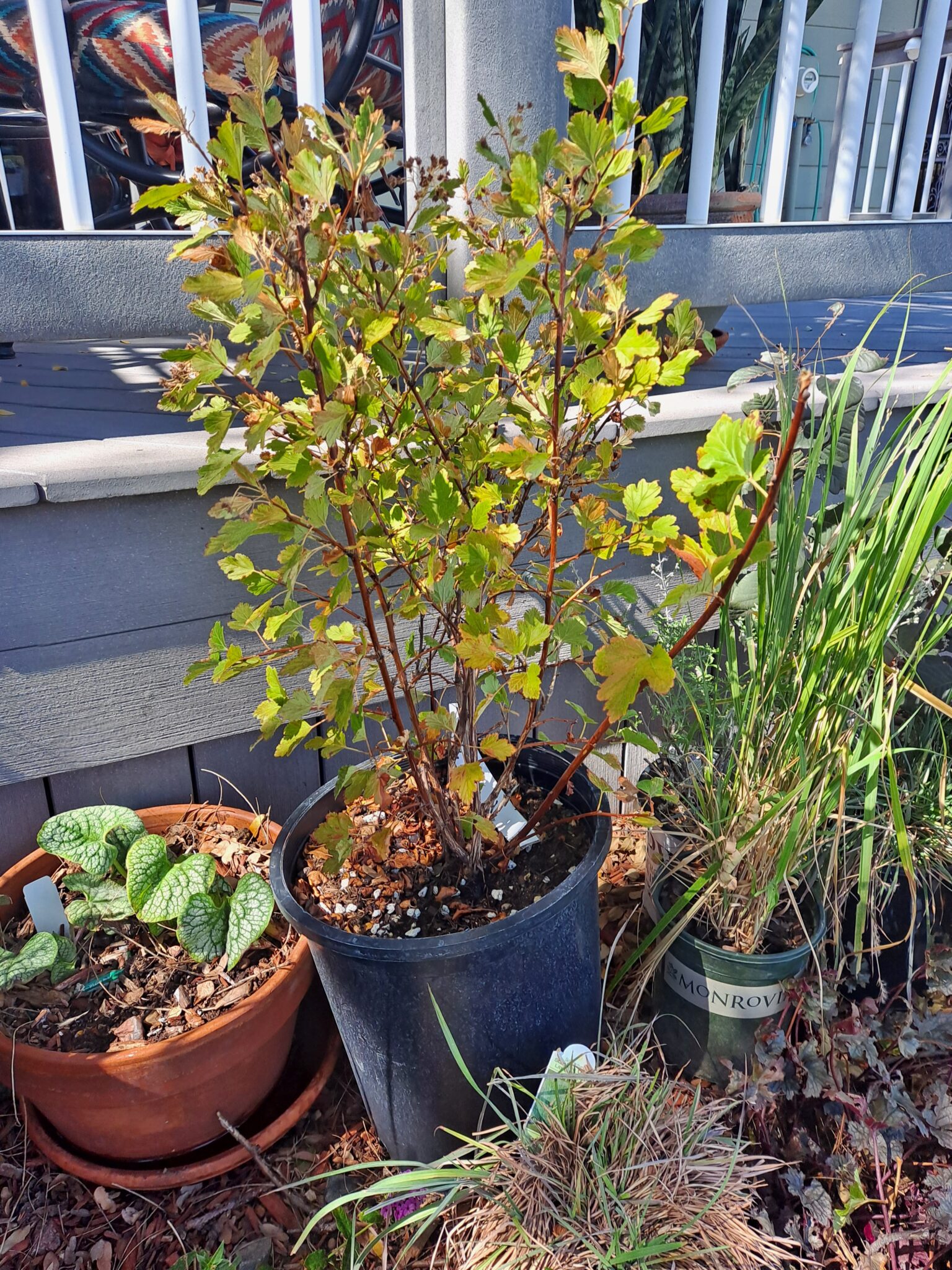
Ninebarks are native to North America, and the eastern varieties are apparently quite stunning. Rocky Mountain ninebark is found in the mountain states (duh), with a range stretching from Montana to New Mexico, with outcroppings in Arizona, Nevada and South Dakota. What makes ‘Grey Rock’ unique is it was found in the Cache la Poudre Canyon near the city of Fort Collins, which is about an hour drive north of me. It’s gets pinkish/white flowers in spring, the seed heads that turn a bright red in summer, and dramatic orange and red foliage color in the autumn. It’s supposed to be somewhat drought tolerant.
For those that are curious: the reason these shrubs get their name ninebark, is because when the bark of mature branches start to peel, the bark comes off in strips and reveals a different color bark underneath.
Here’s hoping it’s tougher than the its predecessors.
Making the move
A couple of years ago I planted a upright phlox here along the front of the deck. Upright phlox typical bloom in late summer, providing color in the garden when it needs it most. Phlox’s are generally not waterwise, and in more humid areas of the country are prone to a fungal disease called powdery mildew.
The phlox I planted is a variety called ‘Jeana’, and is supposed to be more drought tolerant and disease resistant than the standard varieties. You can see ‘Jeana’ in the picture below.
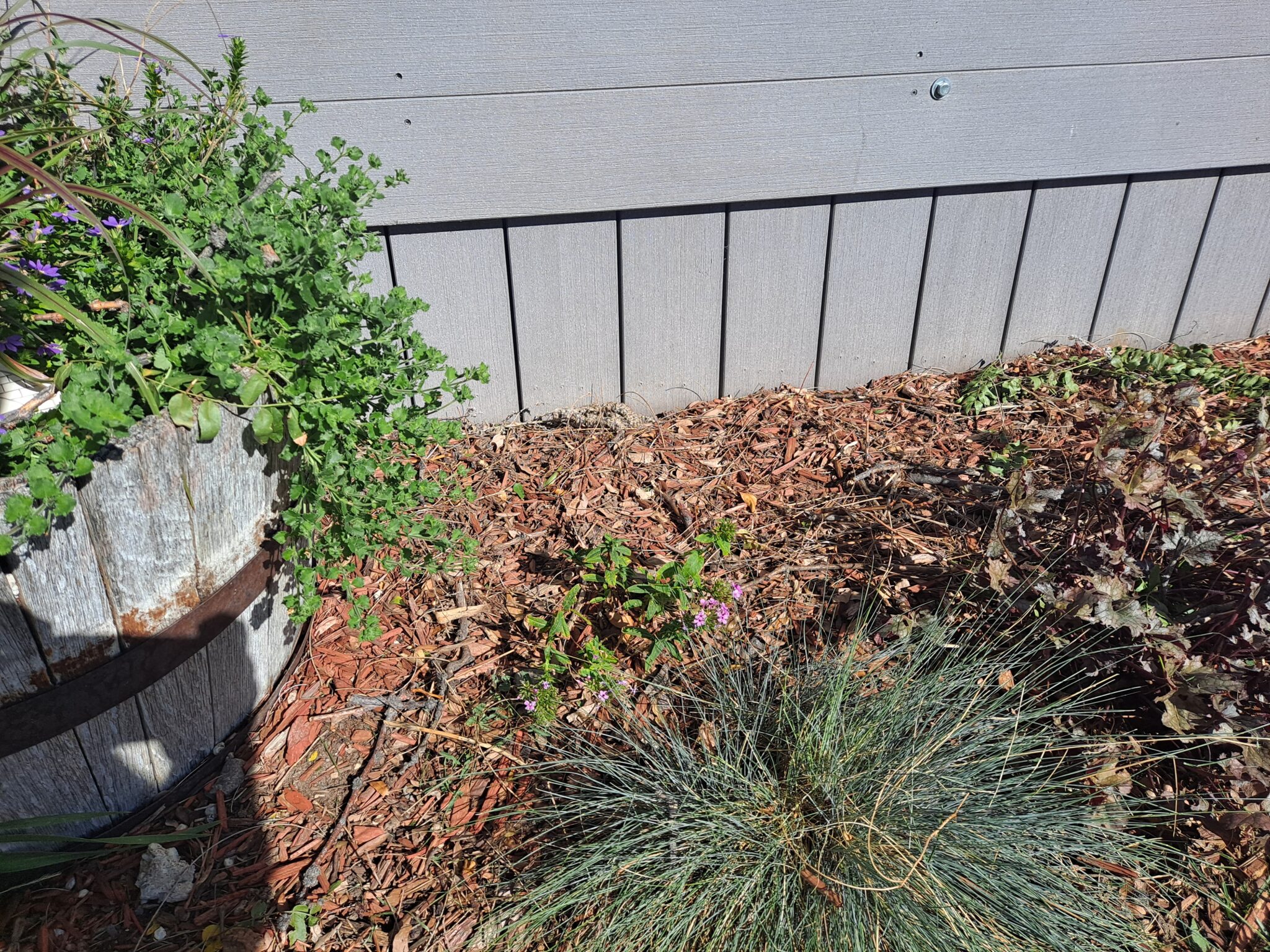
Having a hard time seeing it? Yeah, that’s the problem. The poor thing should be about two or three feet tall by now. It is really not doing well in its present home at all. I have helpfully added a visual aid to allow you to see it.
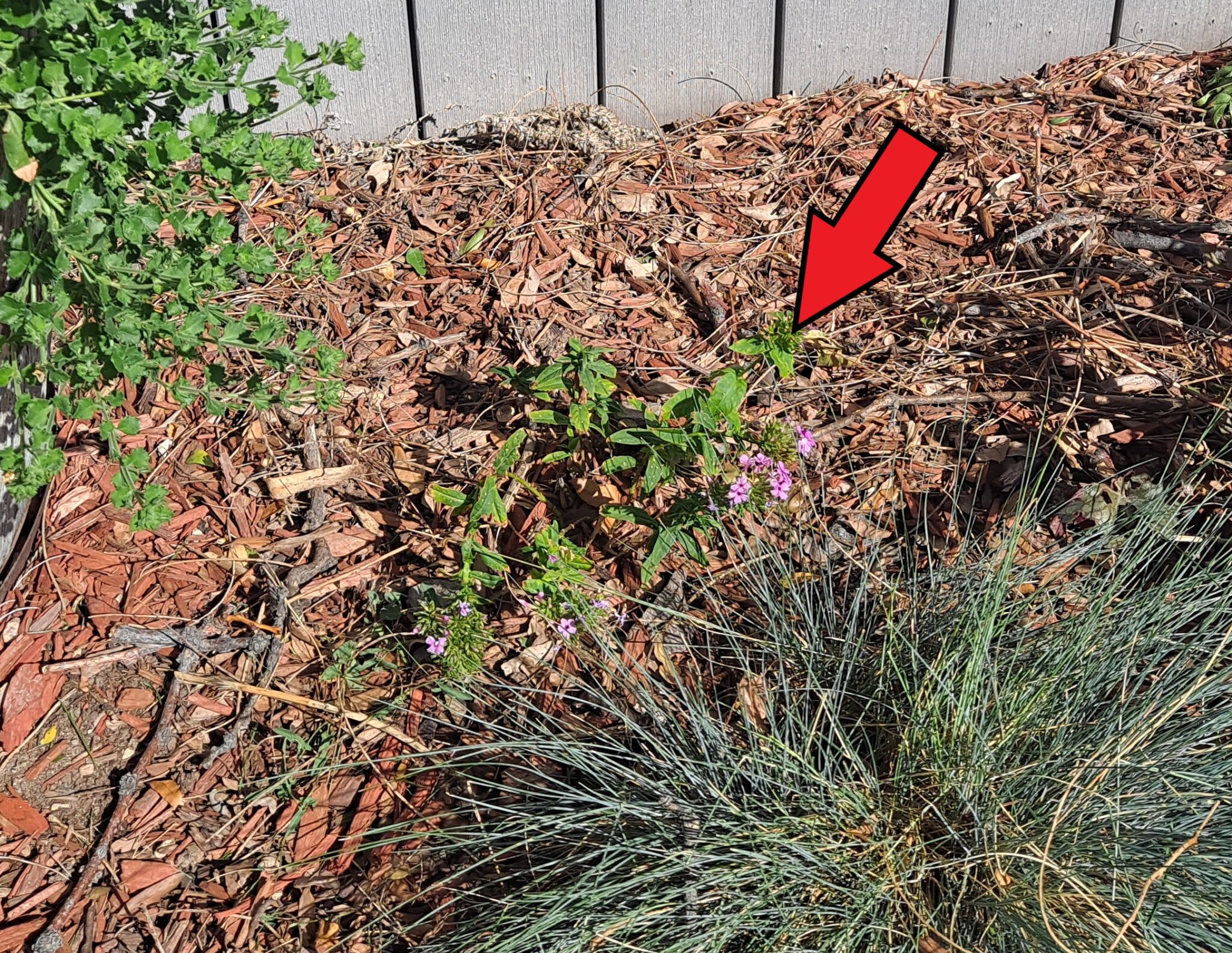
According to the instructions that came with the plant, it prefers morning sun with afternoon shade. Which it gets in this location, but I have a strong suspicion that it is not getting enough sun in the morning for it to thrive. Hence its stunted growth.
So I am going to take a gamble and move it into the Long Border. The spot I am going to put it in is that open area surrounded by the irises you see below. The phlox should get more sun in the morning, and I am hoping that the blue spruce (which is to the right and out of frame in this picture) will provide some afternoon shade.
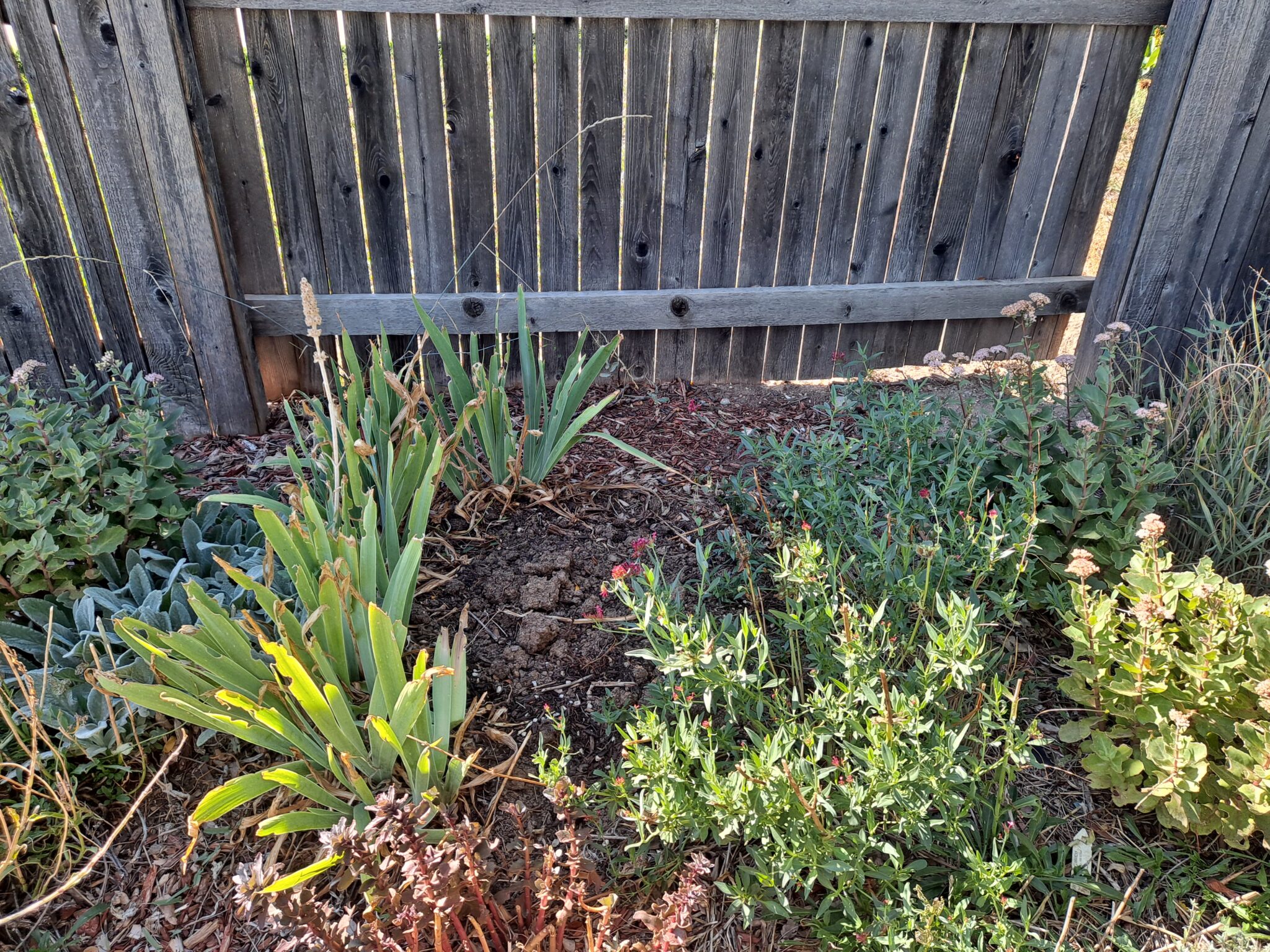
The reason it’s such a gamble to move the phlox this late in the year is that it might not get established before the winter cold comes. I could wait until spring to transplant it, but I fear that since it is struggling so much where it’s currently at, it may not survive until then. Either way, the odds are not good that the plant will make it. Might just as well take a chance and put it somewhere it might thrive.
And in it’s place…
I am going to replace that phlox with this little guy:
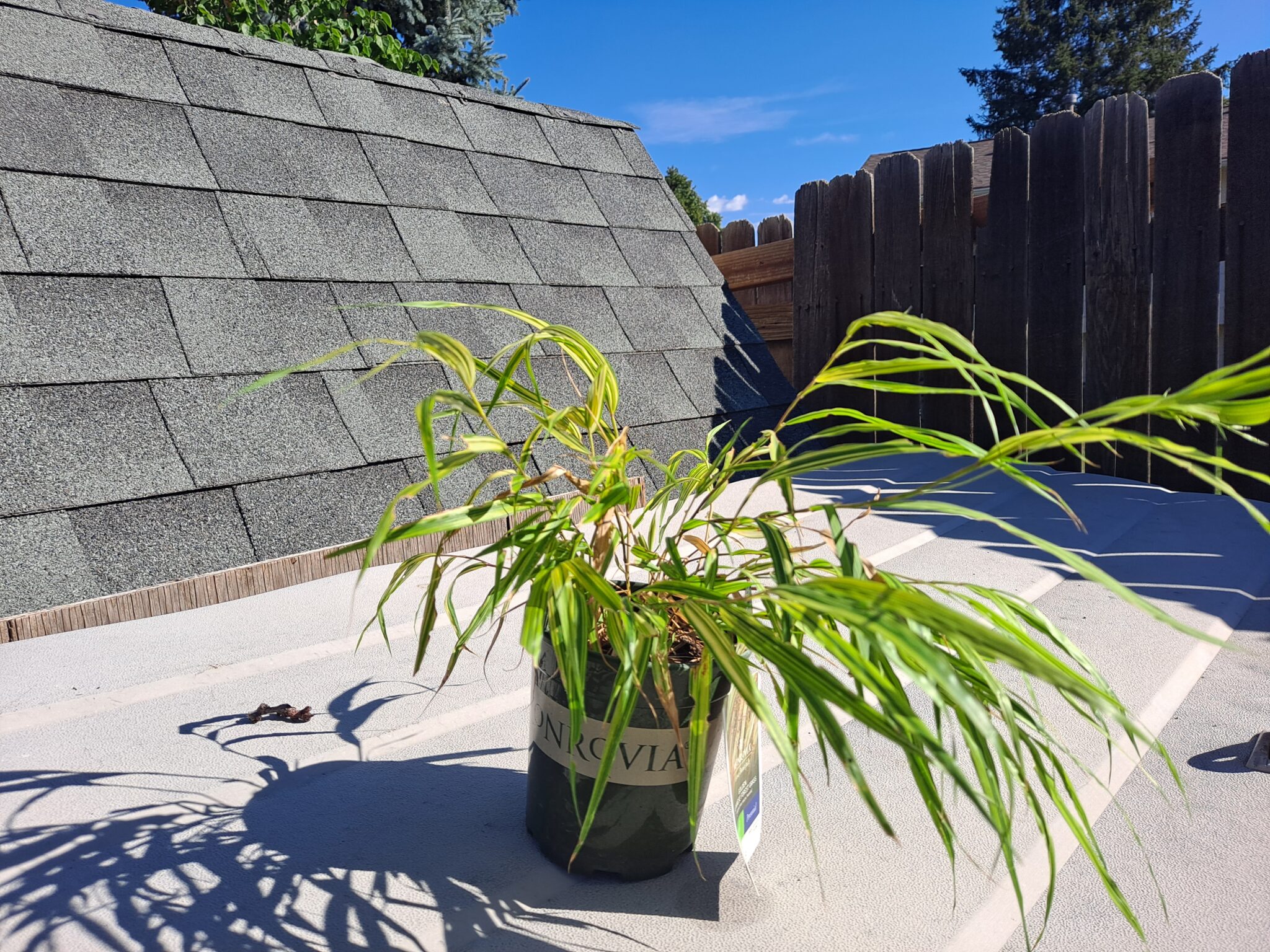
This is Japanese forest grass (Hakonechloa) ‘Aureola’. Japanese forest grasses are able to tolerate more shade than most grasses, which should be perfect for this little spot in front of the deck.
Forest grasses are not particularly drought tolerant, but that is OK. The spot I’m going to put it in is right next to a container whiskey barrel. We put annuals in the barrel for all season long blooms. I generally water that barrel nearly everyday during the hotter months, so it will be no problem giving the new grass a drink while I am at it.
Just take a look at these cool variegated leaves:
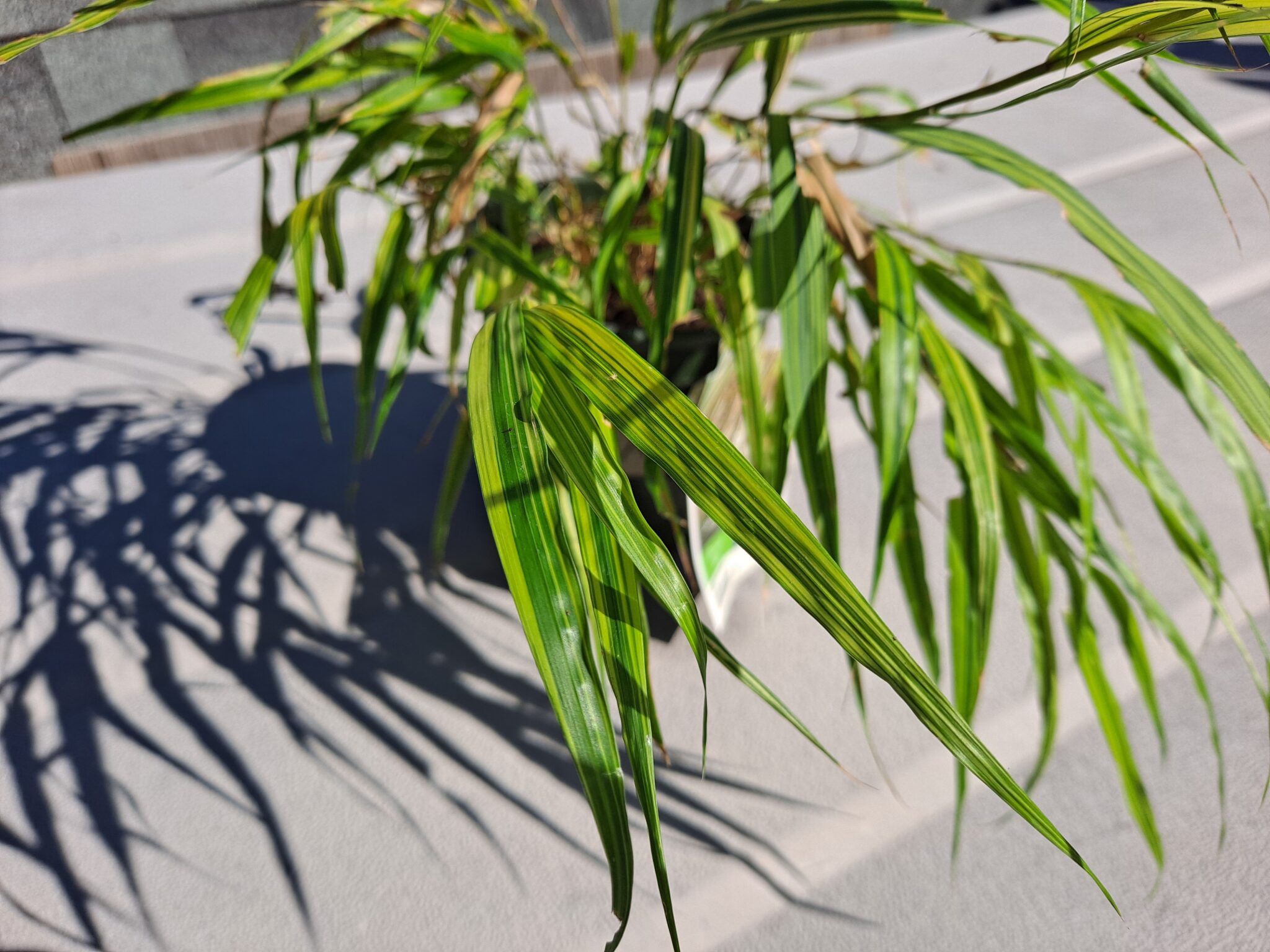
To help this grass thrive, I am going to amend the soil of its new home with a LOT of soil amendments. Two kinds of compost, and a little spagnum moss to help the soil hold on to moisture longer.
Adding a focal point
My last project for the backyard this autumn is planting a Cotinus, also known as smoke bush. If you’ve ever seen one in flower, it not a shrub you easily forget. The sprays of tiny flowers that cover the long upright stems are so prolific it looks like the plant has smoke coming out of it, hence the name.
The shrub comes in both green and purple varieties. The specific variety of smoke bush I have chosen is named ‘Winecraft Black’. Supposedly, ‘Winecraft’ keeps its purple foliage all summer long, and doesn’t turn a muddy brown as the season progresses like other purple varieties do. ‘Winecraft’ is also a dwarf variety, only getting to about 8-10 feet tall. The standard varieties can get up to 20 feet in height. All smoke bushes have good fall color, but ‘Winecraft’ is supposed to turn a dramatic orange color.
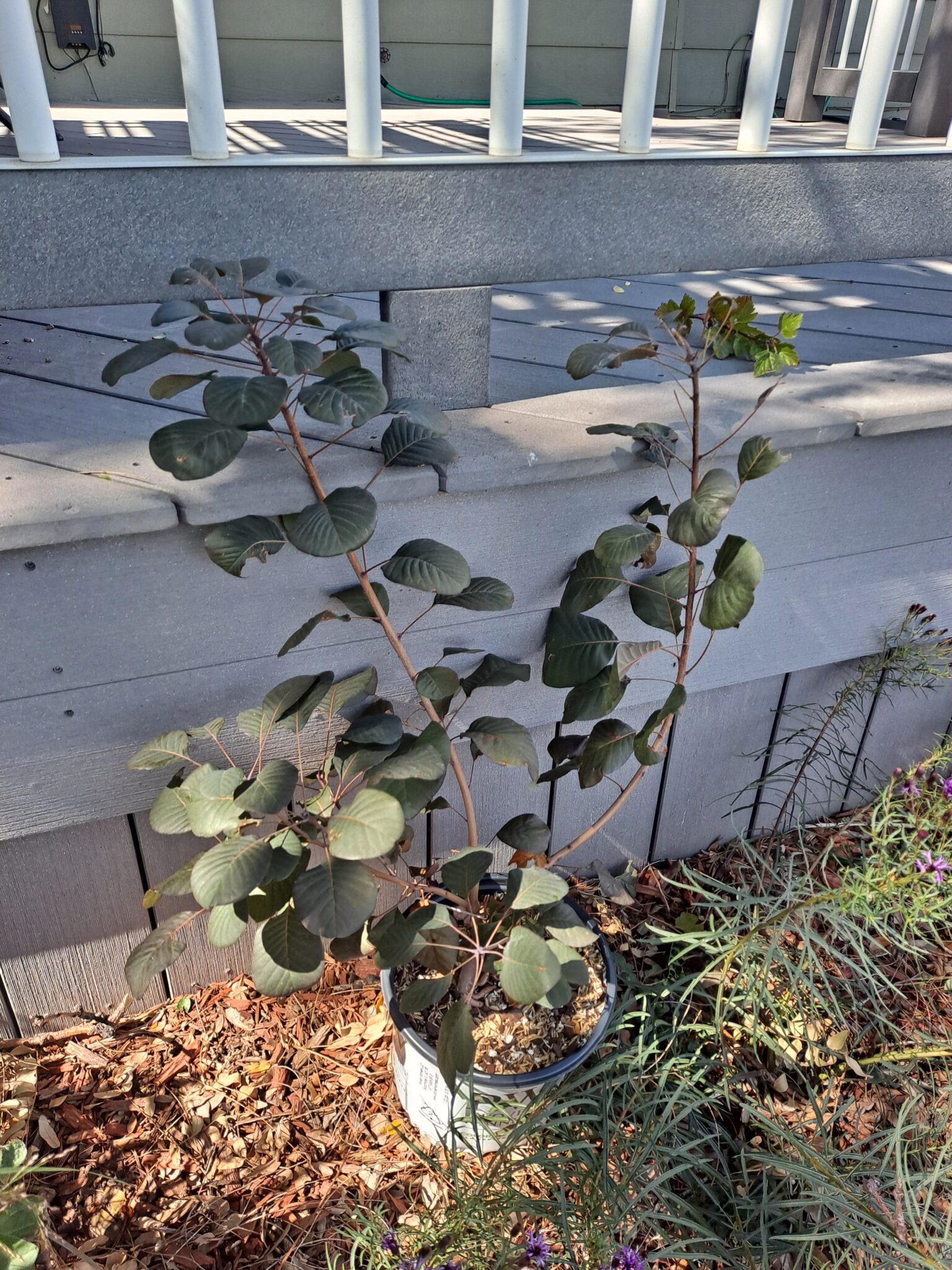
This shrub is going in the very back of the corner border. I think the purple foliage will provide a nice backdrop to all the green leaved plants in front of it. The orange fall color should hopefully mingle well with all the different ornamental grasses I’ve planted in this area. It should also provide a nice focal point throughout the growing season, drawing the eye to this area of the garden.
And most importantly of all, I am hoping it will block out my neighbor’s shed and lumber storage rack he has attached to it. That thing is an eyesore, and I’m sick of looking at it.
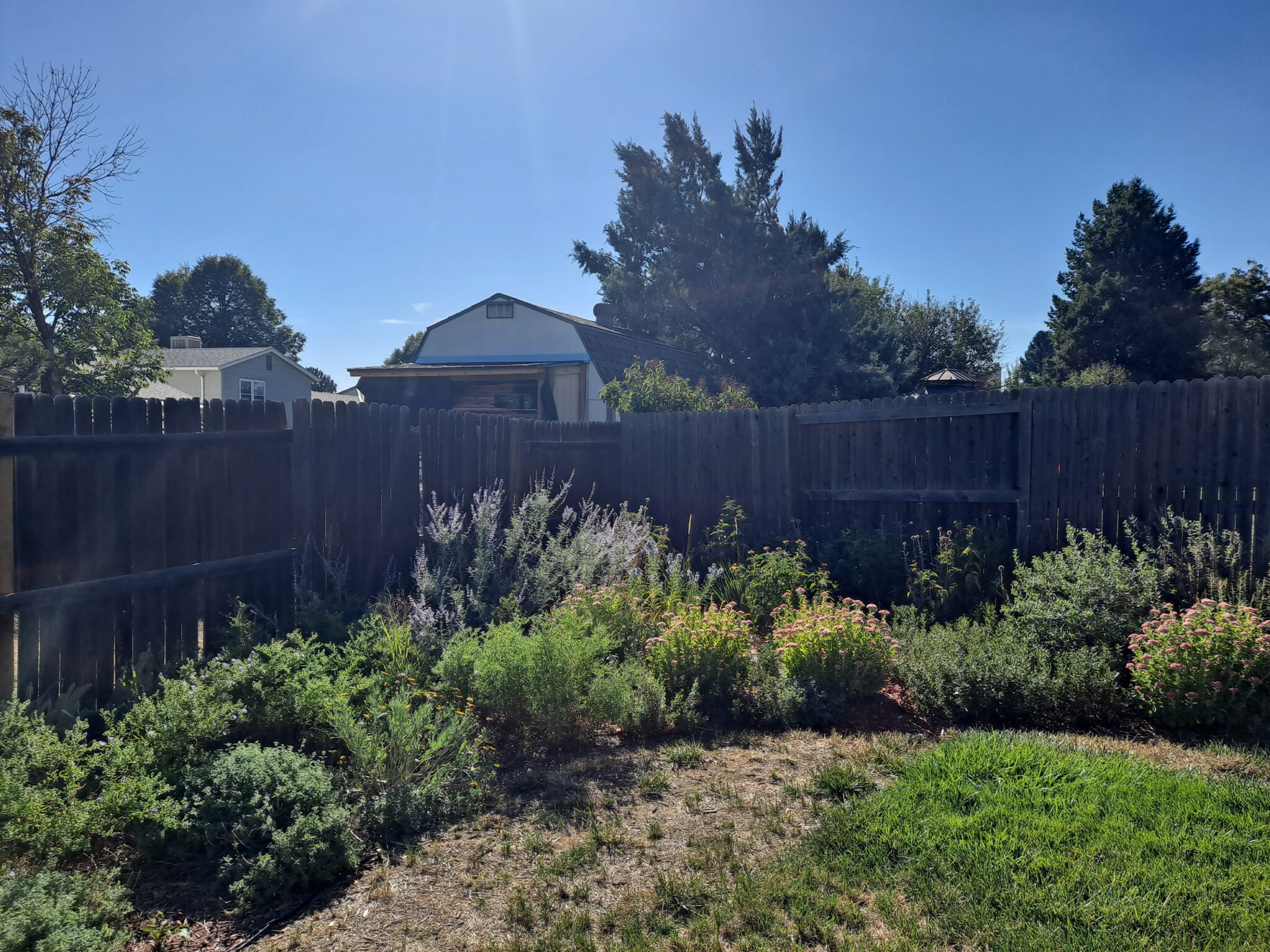
Next week, the front yard
And that’s it for the backyard projects this fall. Well, I am going to plant spring flowering bulbs back here, but that will wait for a few more weeks.
Coming up, some changes to the front yard. Stay tuned!

